Atlantic Monthly Contributors's Blog, page 26
January 5, 2017
The Troublesome Women of Sherlock

When Arthur Conan Doyle killed off Mary Watson, Dr. John Watson’s wife, in 1903, it was in such perfunctory fashion that he didn’t even mention her by name. In “The Adventure of the Empty House,” Watson is astonished to discover that Sherlock Holmes is alive, having thought him dead for more than three years. Holmes briefly details to Watson how he survived his fight with Moriarty at the Reichenbach Falls, and Watson muses on his friend’s return, and his reaction to Watson’s own state. “In some manner he had learned of my own sad bereavement, and his sympathy was shown in his manner rather than his words,” Watson writes. Thus was Mary dispatched: briefly, nonspecifically, and in a way that focused on Holmes, acknowledging his humanity while emphasizing his unshakable professionalism.
Conan Doyle’s axing of Mary was primarily utilitarian. He’d intended to retire Holmes and Watson as characters in 1893’s “The Final Problem,” killing off the esteemed detective, but fan outcry had obliged him to revive them. Possibly intuiting that the pair functioned best as roommates, without the distraction of Watson’s domestic life, Conan Doyle reunited them, which meant Mary had to go. The same reasoning seems to have been involved in the newest episode of Sherlock, “The Six Thatchers,” in which (major spoiler) Mary Watson died after pushing Sherlock out of the path of a bullet intended for him. “The reality of this, of course, is that Sherlock Holmes is about Sherlock and Dr. Watson and it’s always going to come back to that—always always always,” the show’s creator, Steven Moffat, told Entertainment Weekly. “They had fun making it a trio but it doesn’t work long term. Mary was always going to go and we were always going to get back to the two blokes. That’s the format.”
Moffat’s argument that killing off Mary was compulsory is a convenient one—it absolves him of any criticism regarding the decision to write out the show’s first substantial female character. (“[Sherlock writer-producer-actor] Mark Gatiss and I do not have the delusion that we know better than Sir Arthur Conan Doyle,” he opined in the EW interview.) Depending on how charitable you’re feeling, the assertion that Sherlock is rooted firmly in the Sherlock Holmes canon might explain the show’s other deficiencies when it comes to women and characters of color, and why its only nod to modern times seems to be technology. But it doesn’t fully stand up. Sherlock’s supposed adherence to Conan Doyle’s stories doesn’t limit the show when it doesn’t want to be limited—when, for example, it decides to invent a secret past for Mary Watson as a freelance assassin. And when it comes to other female characters, in fact, Sherlock has sometimes been even more regressive than its Victorian source material. It’s a paradox: Why does one of the most dynamic and ingenious shows on television have problems fitting women into its universe?
When Amanda Abbington’s Mary was introduced in the third season of Sherlock, her character seemed to immediately gel with the Sherlock-John bromance, enabling rather than impeding the show’s primary relationship. “I’ll talk him round,” she tells Sherlock (Benedict Cumberbatch), after John (Martin Freeman) has tried to throttle his friend for deceiving him for so long. Straightaway, she likes Sherlock—not most people’s initial reaction after meeting him—and seeks him out when she receives a mysterious text message that seems to allude to John being in trouble. Sherlock also accepts Mary surprisingly easily, winking at her when he remarks that weddings “aren’t really my thing.” The scene echoes Sherlock’s response to Watson’s engagement in Conan Doyle’s “The Sign of the Four” when he states, “I think she is one of the most charming young ladies I ever met, and might have been most useful in such work as we have been doing,” even while acknowledging that love is opposed to his preferred emotion, reason.
In Sherlock, Mary is a nurse at John’s medical practice but she isn’t subservient in any way, and Abbington’s spirited portrayal of the character made her a gratifying addition to the show. In the final episode of the third season, “His Last Vow,” Sherlock extended the character further by making Mary one of the episode’s antagonists, revealing that she was a former assassin being blackmailed by a media baron with knowledge of her past. The fantastical (and soapy) twist not only defied the source material, it presented viewers with an intriguingly complex character—one with the ability to do awful things and remain sympathetic, much like Sherlock and John.
That Moffat would go to all this effort to create such a textured interpretation of Mary Watson only to kill her off to make room for Sherlock’s central relationship is a little baffling. Especially given that—unlike her literary counterpart—Mary gave birth to a daughter, and a baby isn’t the most conducive element to the adventures of two freewheeling bachelors. The more likely explanation is that Mary was killed to provide narrative momentum and conflict for a show that had otherwise stalled. As a dead wife and mother, Mary fits into the trope of a Lost Lenore, a character whose loss provides impetus for grief, anger, and revenge. While Conan Doyle’s Watson recovered from the loss of his wife in the space of a single sentence, the death of Abbington’s Mary has prompted a rift between Watson and Sherlock, widened by Watson’s guilt over his hinted infidelity.
Some have interpreted the mob of suffragettes wearing KKK-like hoods in“The Abominable Bride” as an allegory for Sherlock’s feminist critics.
This isn’t the first time the show has taken an intriguing female character and used her to propagate stale gendered archetypes. The first episode of the second season of Sherlock revolved around Irene Adler (Lara Pulver), a dominatrix who blackmails her clients and trades state secrets with Holmes’s nemesis, Moriarty (Andrew Scott). The character appears in the 1891 story “A Scandal in Bohemia,” in which she’s an actress who possesses a compromising photograph of herself with a European king, who is about to be married. As in the Conan Doyle story, Pulver’s Irene captivates Sherlock and challenges his perceived ideas about women. But in the show she’s a manipulative foe who uses her naked body to provoke him, and who has to be rescued from certain death, losing her battle of wills with Sherlock because of her feelings for him. In the original story, though, she’s simply a performer who hangs onto the photograph for her future security, and who ultimately outwits Sherlock. “He used to make merry over the cleverness of women, but I have not heard him do it of late,” Watson writes.
The transformation of Adler from Sherlock’s intellectual equal into a beguiling victim was immensely disappointing to some female fans of the show at the time. “The modern Irene Adlers are morally bankrupt puppets deploying their sexual wiles to lead men into the power of an infernal master—and are justly punished for it,” Esther Inglis-Arkell wrote for io9. “That goes all the way back to Eve.” This same sense of culpability was echoed in “The Six Thatchers,” in which it was insinuated by both Mary and Sherlock that Mary’s death was inevitable given her former career. “My old life, it was full of consequences,” she explains in her posthumous video for Sherlock. “The danger was the fun part, but you can’t outrun that forever.” Mary is gravely punished for doing what she loved and what she was good at, while Sherlock and John carry on largely unscathed.
It remains to be seen if new female characters will present themselves in season four. There are possible depths to “E,” John’s mysterious new contact (she’s played by Sian Brooke, who played Ophelia opposite Cumberbatch’s Hamlet at the Barbican in 2015). There have been hints about another Holmes sibling, with Mycroft (Gattis) asking to speak to “Sherrinford” at the end of “The Six Thatchers.” (Sherrinford is a hypothetical older brother to Mycroft and Sherlock who doesn’t appear in Conan Doyle’s stories, but who’s appeared in derivative works by other writers.) It would be counterintuitive (and gratifying) if “E” turned out to be Enola Holmes, an extra-canonical sister devised in stories by Nancy Springer, but it’s unlikely. Moffat is notably touchy about feminist criticism of Sherlock. Some have interpreted the mob of suffragettes wearing KKK-like hoods in the 2015 Sherlock Christmas special “The Abominable Bride” as an allegory for the pushback the show received for its interpretation of Irene Adler.
For now, the series’s primary female characters are Mrs. Hudson (Una Stubbs), Baker Street’s landlady, and a former stripper and cartel moll, and Molly Hooper (Louise Brealey), a pathologist whose help Sherlock relied upon in “The Reichenbach Fall.” Brealey’s character is notable in that she’s entirely original—she was reportedly only intended to appear briefly, but Moffat liked her performance so much that he kept Molly around. Although her primary characteristic is her unrequited love for Sherlock and a resulting string of bad boyfriends, she’s a smart, intuitive, and realistic woman, sensing Sherlock’s emotional pain at being tortured by Moriarty before anyone else. Molly proves that women can be flesh-and-blood characters in Sherlock, ones that add to the dynamic of the central twosome rather than diminish it. It’s a shame Mary wasn’t given the same opportunity.

January 4, 2017
Why Is Trump So Reluctant to Accept Claims of Russian Hacking?

Even by the ever-stretching standards of the president-elect, Donald Trump’s response to the accusations of Russian interference with the election is somewhat puzzling.
On the side that believes Russia is to blame, and ought to be punished, are the White House; the Republican leadership and most of the rank-and-file in both houses of Congress; and the intelligence community. They point to a plausible motive, which is the Kremlin’s hatred of Hillary Clinton, and a plausible precursor, which is the Kremlin’s pattern of interfering with other governments’ elections. Opposing them are Trump, his inner circles of aides, the Kremlin, which denies responsibility, and WikiLeaks, which insists it did not receive the documents from Russia-linked hackers.
While there is some principled skepticism about attributing the hacks to Russia, Trump’s mockery of the intelligence community has not cited specific concerns. And if, as his adviser Kellyanne Conway suggests, Trump is receiving information from other sources, it’s unclear why it would be more credible or accurate than that provided by the intelligence community. Moreover, neither Trump’s record of being either misinformed or simply uninformed about policy matters foreign and domestic, nor his choice of Mike Flynn, who has a penchant for lending credence to unsubstantiated conspiracy theories, as his national security adviser, provide much reason to believe him over the consensus view of the intelligence community.
But Trump’s reluctance to publicly accept Russian responsibility for the hack might have less to do with how he views the evidence than with how he views the stakes of the argument. He has consistently placed his emphasis on winning, and on presenting himself as a winner. And to the extent that claims of Russian hacking call the nature of his electoral victory into doubt, he’s responded by dismissing those claims, and emphasizing his triumph.
Take this pair of tweets on Wednesday morning:
Somebody hacked the DNC but why did they not have "hacking defense" like the RNC has and why have they not responded to the terrible......
— Donald J. Trump (@realDonaldTrump) January 4, 2017
things they did and said (like giving the questions to the debate to H). A total double standard! Media, as usual, gave them a pass.
— Donald J. Trump (@realDonaldTrump) January 4, 2017
On its face, this argument is incoherent. There’s no evident conflict between the view that the DNC should have maintained better defenses against intruders and acted more forcefully when informed about hacking attempts, and the view that foreign interference with U.S. elections is a dangerous thing.
Trump’s emphasis on a particular detail in the leaked DNC emails is similarly baffling. In one email, once and current interim DNC Chair Donna Brazile was revealed to have passed along a question for a future Democratic primary debate to the Hillary Clinton campaign. That was hardly ignored by the press; Brazile lost her contributor gig at CNN as a result. Bernie Sanders might be justifiably upset about Brazile’s actions, although the question she passed to Clinton was eminently predictable, but low-grade cheating in a Democratic presidential debate is also unrelated to the charge that a foreign government attempted to influence the presidential general election.
But the tweets become more legible if they’re read as a simple tally of advantages and disadvantages. Trump is unusually focused on “fairness”—consider the number of times he has tweeted about it—although his definition of the word often seems to hinge on whether or not something is good for him. But this idiosyncratic conception of fairness helps to explain Trump’s view of the hacks: If hacks targeted at the DNC helped give him a leg up, then they are counterbalanced by Brazile’s cheating, even if one is the result of a questionable cable-news model of hiring partisan operators and the other is allegedly designed to undermine American democracy.
Many Democrats encouraged this kind of thinking, in which partisan advantage is the metric by which competing claims are evaluated, with their muted responses to the initial reports of Russian hacking. When they believed that the interference was simply a headwind that would hinder but not stop Hillary Clinton’s march to the White House, they were willing to not make a big deal out of it. They may be right, now, that foreign interference in American elections is unacceptable, but they undermined their standing to make that case by downplaying it when they thought they had the political advantage.
The same zero-sum view might also help explain the alliances Trump strikes, which follow an almost amusingly straightforward enemy-of-my-enemy-is-my-friend formulation. Perhaps Trump reasons that if he’s against Barack Obama and Hillary Clinton, Obama is out to get Putin, and Putin is out to get Clinton, then he should be for Putin.
This would be one way to explain the sudden embrace of Julian Assange by Trump and his supporters. In 2010, CNN reports, Trump was asked about Wikileaks: “I think it's disgraceful, I think there should be like death penalty or something.” Fox News’ Sean Hannity also used to deplore Assange, but now finds him eminently trustworthy when he says Russian hackers were not WikiLeaks’ source. Sarah Palin has decided he’s OK, too. Meanwhile, Trump’s ostensible ally Paul Ryan, the speaker of the House, told Hugh Hewitt on Wednesday that Assange was “a sycophant for Russia” who “steals data and compromises national security.” (Of course, one can believe the documents Assange has produced over the years while still questioning his motivations and his account of how he obtained those files.)
The press has eagerly ferreted out scores of inconsistencies in Trump’s public statements. On the hacks alone, there’s the conflict between his openly saying Russia should hack Hillary Clinton and his recent refusal to acknowledge Russia might even be a factor, or between his discussion of hacking during the campaign and his more recent, preposterous claim that no one brought it up during the campaign. Reporters should continue to do this, because it’s a valuable service for the public, but it’s not a surprise that Trump isn’t ashamed of the inconsistencies. Trump’s calculus is much simpler and more manichean. It was often said that Barack Obama was playing “12-dimensional chess” against his opponents. Trump is proudly playing checkers. And he’s winning.

Opening Paragraphs Don’t Always Have to Be Exciting
By Heart is a series in which authors share and discuss their all-time favorite passages in literature. See entries from Karl Ove Knausgaard, Jonathan Franzen, Amy Tan, Michael Chabon, and more.

Doug McLean
There’s a widely circulated truism that short stories should start with a spring-loaded “hook,” a can’t-miss-it first line that foregrounds conflict right away. (You know the kind of thing: “On the morning of the day my brother killed my father, I spent an hour unburying my truck from new snow.”) But Emily Ruskovich, the author of Idaho, teaches her writing students not to grab at the reader so directly—the technique, she says, tends to result in desperate, dishonest openings.
In her conversation for this series, Ruskovich discussed Alice Munro’s “The Love of a Good Woman,” a novella that begins in the least flashy way possible: on the musty shelves of a local museum, with drawn-out descriptions of the objects displayed there. The dramatic plot includes a murder, a cover-up, the discovery of a body, a life destroyed by guilt—but the narrative proceeds with great discipline, revealing its secrets carefully over time. Ruskovich explained how the story’s power, horror, and beauty derive from Munro’s restraint, and how its central image—a red box full of optometrist’s tools—becomes a powerful reminder of what’s missed when we move too quickly to look closely.
Like “The Love of a Good Woman,” Idaho is a murder mystery—but the mystery is not who did it so much as so much as how, why, and with what consequence. The novel centers around Wade, an Idaho man who has lost both his daughters; when his ex-wife, Jenny, murdered one child, the other fled into the woods and disappeared for good. As Wade slips into dementia—with catatonic episodes that can turn violent—we, like his second wife, Ann, try to reconstruct, understand, and ultimately come to terms with the sorrowful events of the past. Emily Ruskovich is a graduate of the Iowa Writers’ Workshop, where she was my classmate, and was a James C. McCreight Fiction Fellow at the University of Wisconsin-Madison. Her fiction has appeared in Zoetrope, One Story, and the Virginia Quarterly Review; in 2015 she won an O. Henry Award for her story “Owl.” She teaches writing at the University of Colorado-Denver, and spoke to me by phone.
Emily Ruskovich: I first read Alice Munro when I was in college, and I’d never heard of her before. My professor, Deirdre McNamer, gave me a copy of her story “Runaway”—and when I read it, I felt as if I’d been unlocked. It wasn’t that I had something in common with the character. It was that I had something in common with the story, with its very structure. Munro completely captured the mysterious way my own memory works.
I remember going up to my professor, having no idea who Munro was, having only read this one story in a bad photocopy. I was just kind of concerned. I said, “I don’t understand why this woman isn’t famous. Does she know how good she is?” My teacher laughed. “She’s pretty famous,” she said. “I think she knows.”
I don’t actually recall the first time I read “The Love of a Good Woman.” I’ve read it so many times, because I teach it in many of my classes. But every time I read the story, I find something new—I become obsessed with some new discovery.
The story is about a woman, Enid, who finds out that the husband of the sick, dying lady she cares for has committed murder. That plot, in the hands of a lesser writer, would already be interesting. But even though the plot of this story is intense—there is murder, there is lust, there are secrets, there are many vivid, mysterious scenes—the whole story, especially the beginning, is so quiet. And the quietness is where the story’s intensity comes from.
It begins like this:
For the last couple of decades, there has been a museum in Walley, dedicated to preserving photos and butter churns and horse harnesses and an old dentist’s chair and a cumbersome apple peeler and such curiosities as the pretty little porcelain-and-glass insulators that were used on telegraph poles.
Also, there is a red box, which has the letters D.M. WILLENS, OPTOMETRIST printed on it, and a note beside it, saying, “This box of optometrist’s instruments though not very old has considerable local significance, since it belonged to Mr. D.M. Willens, who drowned in the Peregrine River, 1951. It escaped the catastrophe and was found, presumably by the anonymous donor, who dispatched it to be a feature of our collection.”
This opening shows such amazing restraint. Munro is so confident in her writing that she never feels the need to “grab” a reader right away, which is something I think a lot of writing teachers try to get their students to do—advice that often results in dishonest beginnings. This idea that you’re going to lose your reader if your first paragraph doesn’t contain something really exciting—I just think that’s false. I don’t want to be hooked or grabbed. I don’t need to be tricked into reading a story.
Of course, a story does need to have some kind of tension from the first line. In this case, it’s the confidence of this mysterious voice, the assurance with which the narrator lays out these ordinary details. The mystery is: Why here? Why is this brilliant author starting the story in this seemingly straightforward way? I am grabbed by this beginning not because it is especially exciting, but because I trust Munro’s voice. If she believes that she must begin with a plain-spoken description of an item in a museum, then I am fascinated by that item because she is fascinated by it, and because I sense all that she is withholding in her attempt to be honest and straightforward. I trust her absolutely, and I don’t think there is anything more important than that to a reader.
But the subdued tone here is more than stylistic. We come to discover that it is intricately tied to character, as everything in a Munro story is. If Munro feels that she wants to start a story in a very restrained way, it’s because the character shows an immense amount of restraint. And though she is not introduced until many pages into the story, restraint is the defining trait of Enid, the protagonist. She’s a nurse, which means she puts aside her needs to attend to the needs of others. Enid has this story she tells herself about who she is: She is the person who gives up what she loves because other people ask her to. It’s this romantic notion she has that seeps out of the cracks in her otherwise very restrained, very orderly and medical outlook on her life.
Restraint is central, too, to the murder at the heart of the story. Rupert, the husband of the woman Enid cares for, is an extremely restrained person—when Enid gives him a compliment about something his smart little girl said, he can’t even acknowledge her compliment, though she senses he’s pleased. He’s the kind of person who spends his life ignoring anything that is remotely emotional or uncomfortable, deflecting those things with idle remarks about the weather or the cutting of the hay.
But we find out that, one day, he came home and found the optometrist, Mr. Willens, examining his wife—he was kneeling on the floor, with his hand on her leg, and accidentally her skirt had been pulled up slightly above her knee. Somehow, this enrages him. Emotion just overflows in him, and he commits murder just like that. A lifetime of restraint builds up to the point that he has an absolute lapse of control.
Munro describes the aftermath of the murder this way: “Rupert jumped out of the chair so that it was still rocking, and he started picking up all the things and putting each one back where it went in Mr. Willens’ box.”
To me, that’s such a human response. It’s what most characterizes Rupert, this repression, this obsession with order. Here he’s got Mr. Willens’s dead body in his room, with strawberry-colored foam coming out of his mouth—and yet, the first thing he does after that lapse of control is put all the spilled-out instruments back into this red box. Everything in him is entirely under the surface. And so, later, when Alice Munro puts a hatchet in that man’s hands and has another character tell him that she knows all his secrets, the danger is so much greater.
If you only read the story once, it’s easy to miss that we’ve been introduced to this red box already. But it’s right there on the first page: “Also, there was a red box,” with this casual little “also” there, as if it’s an afterthought. Of course, it’s not at all an afterthought—it’s the key to an unsolved murder, even though we could never know that at the beginning. We can only sense it the quiet intensity of Munro’s voice.
Something Alice Munro never does is privilege language over character, or anything over character.
The last thing we learn about this box is that Mrs. Quinn, Rupert’s wife and Enid’s patient, hid it somewhere—Mrs. Quinn will never tell where. Yet, here, at the beginning of this story, we know exactly where it is. It’s in the museum, but how did it get there? The museum offers its own explanation: “It was found, presumably, by the anonymous donor.” “Presumably”: an official-sounding, distant, museum word. Yet it contains the whole aching mystery of these characters’ lives, a mystery that the story is too perfect to outright name.
It’s so hard to exercise this level of restraint. In flashier stories, I often encounter images that feel to me, ultimately, to be dishonest. I’m thinking of a story I read recently by a renowned author, that begins with a first-person narrator describing the drowning of his daughter. She’s on a lake playing hockey, and the ice breaks and she drowns—but the way that this narrator describes his daughter drowning is so beautiful. There’s something about her hair drifting upward as she goes under, the hockey stick left spinning on the ice like a compass. These are amazing similes and descriptors. But I was kind of appalled, because this is not how a father would remember the drowning of his daughter. He simply would not use language that way. There would be absolutely nothing beautiful about it. The story was well-written and it was published in a great magazine, but something that Alice Munro never does is privilege language over character, or anything over character.
This is something I try to think about when I’m writing—there are times, definitely, when I feel like I have to cut back on what I’ve just written because it’s not quite honest yet. In my novel, I wrote about an event that’s so shocking and ugly—the murder of a little girl. I struggled the whole book with how to make clear what happened, the actual events of what took place, without the language being too direct as to be vulgar, or too vague as to be beautiful. It was a challenge to describe something so ugly and unfathomable in language that was both plainspoken and mysterious, while also remaining true to the voice of the novel, which is a poetic voice. I had to go back and exercise restraint sometimes, really struggle over certain paragraphs for a long time. The challenge is to word something clearly while also leaving enough room for mystery, to let things remain open and complex for the reader even if I’ve made up my mind. That’s always very hard.
At the end of “The Love of a Good Woman,” Enid imagines that she’s going to tell Rupert that she knows he committed murder. In her vision of things, she’s going to lead him back to the police station and he’s going to confess, and they’re going to kind of have this weird romance while he’s in prison. I remember teaching this story, once, and trying to explain about open endings: Even though we don’t get to see Enid follow through, the fact that she has made the decision to do what she’s going to do is an ending in its own.
But then one of my students raised her hand. “But Ms. Ruskovich,” she said. “We do know what happens. Or at least we know what doesn’t happen.” And she read out loud the passage from the very beginning, about the red box: “This box of optometrist’s instruments though not very old has considerable local significance, since it belonged to Mr. D.M. Willens, who drowned in the Peregrine River in 1951.”
The distant, restrained, and non-flashy beginning is the key to everything.
And she was right—though, in all the times that I had read this story, I never saw it. I never saw that the answer to the ending was in this little aside, right here in the second paragraph. Because if Enid had turned Rupert in, the local museum certainly wouldn’t have had a sign saying that Mr. Willens drowned in the Peregrine River. We know, then, she did not do what she’d resolved to do. So how did the box get there? The only conceivable answer is that Enid… well, I don’t know, actually. I guess that’s why I love this. The closer you get to a character, the more mysterious he or she becomes. The closer you get to that red box, the more mysterious it becomes.
When you start the story, the box is just an object sitting among other objects, covered in dust—next to a horse harness and an old dentist’s chair and an apple peeler. But as you read and re-read, you start to sense the human history that can be told through these objects. Each one is suffused with a whole lifetime of compassion and secrets and suffering. And though Munro gives us the privilege of looking at one of them, the red box, the other objects are left unspoken for. That’s very moving: you get the sense that you could write an entire novel about the horse harness, too, or the dentist’s chair, or the apple peeler.
The story itself is as self-sacrificial as its characters in the way that it’s told, the way scenes are arranged, with no great attention at all paid to the most crucial of details—even though those details are there, plainly, for everyone to see, infused with a mystery so profound that they can only be articulated plainly. Some of my students have even remarked that these opening passages are “boring.” And yet this beginning—this distant, restrained, non-flashy beginning—is the key to everything. It’s so honest. So real. The greatest mysteries of humanity are hidden in plain sight here, hidden inside of such plain-spoken language.

TV Shows to Look Forward to in 2017 (So Far)

More and more, superheroes are encroaching on the world of TV (though not as much as film). But there’s plenty else to look forward to on the small screen in 2017: debuts of promising original shows, new seasons of critical favorites like The Leftovers and Fargo, and the long-awaited return of Star Trek, one of television’s most famous franchises, to its original medium. Below, a list of the 20 most exciting shows in the coming year.

NBC
Friday on NBC
Premieres January 6
In the last 10 years, audiences have gotten Wicked, Oz the Great and Powerful, and a revamped The Wiz, but NBC in its infinite wisdom thinks the world needs a fresh take on The Wizard of Oz, so here’s a “dark and edgy” reboot. Directed by the visually adventurous Tarsem Singh (who made The Fall and the Snow White update Mirror, Mirror), Emerald City features Vincent D’Onofrio as the Wizard, steampunk helicopters, and a German Shepherd Toto. Your best guess as to the point of all this is as good as mine.

Netflix
Friday on Netflix
Premieres January 6
Though Netflix has experimented with the TV format over the years, it’s beginning to embrace the old-school multi-camera comedy as well, here revamping Norman Lear’s classic family sitcom for 2017 audiences. One Day at a Time is still a laugh-track sitcom about a single mother—Penelope (Justina Machado), a Cuban-American military veteran with a teenage daughter and “socially adept tween” son. Rita Moreno co-stars as Penelope’s grandmother, and early reviews are strong.

FX
Tuesday on FX
Premieres January 10
This miniseries comes from co-creators Steven Knight (who wrote Dirty Pretty Things, Locke, and Allied among others), Tom Hardy, and his father, credited as “Chips” Hardy. Unfortunately, Taboo is not about how Chips got his nickname—it’s an eight-episode story about a mysterious man (played by Tom Hardy) who returns to London in 1814 after years in Africa, seeking revenge on the East India Company for his father’s death.
A Series of Unfortunate Events

Netflix
Friday on Netflix
Premieres January 13
Fans largely derided the 2004 film adaptation of Lemony Snicket’s series of dark children’s novels. But an eight-episode Netflix series might prove a better medium for translating the 13-book series, with author Daniel Handler (who penned the books under the Snicket pseudonym) scripting. Neil Patrick Harris stars as the villainous Count Olaf, with Joan Cusack, Patrick Warburton, and Alfre Woodard among the supporting cast.

HBO
Sunday on HBO
Premieres January 15
Here’s the pitch: Lenny Belardo (Jude Law) is the new pope (the first American in history to hold the position), and boy, is he young. Created by the operatic Italian director Paolo Sorrentino (behind such films as The Great Beauty and Youth), The Young Pope isn’t going for subtlety, but it has already aired in Italy and the UK to critical acclaim. HBO is positioning the show as its big winter prestige drama, and if nothing else, it looks like opulent fun. Diane Keaton co-stars as Lenny’s mentor and personal secretary.
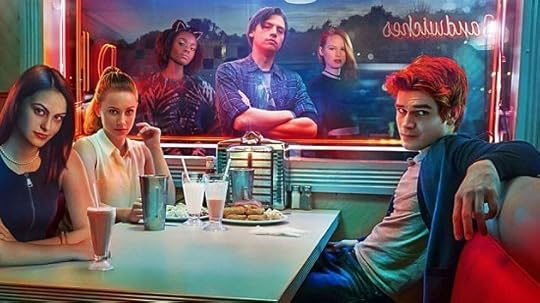
The CW
Thursday on The CW
Premieres January 26
A millennial revamping of the Archie Comics universe, which features a surprisingly buff Archie Andrews (K.J. Apa), a “philosophically bent” Jughead (whatever that may mean), a mysterious past for Cheryl Blossom, and Luke Perry as Archie’s grizzled dad. Betty and Veronica are on board too, of course. As silly as some of the details might sound, early word on the show is strong, perhaps because it was developed by the veteran comic-book and TV writer Roberto Aguirre-Sacasa.
Powerless

NBC
Thursday on NBC
Premieres February 2
Unlike Marvel’s attempts at television tie-ins to its superhero movies, Powerless (which is connected to the DC comics universe) is a show about ordinary folks trying to live their lives around the chaos of Superman, Batman, and their ilk saving lives. Vanessa Hudgens and Danny Pudi star as office drones working in the bowels of Bruce Wayne’s company, with Alan Tudyk as their tyrannical boss. Essentially, it’s a workplace sitcom, just with superheroes whizzing around in the background.
Santa Clarita Diet

Netflix
Friday on Netflix
Premieres February 3
Sprung from the truly underrated comic mind of Victor Fresco (Andy Richter Controls the Universe, Better Off Ted), Santa Clarita Diet might be his first series to not suffer an untimely cancellation despite critical acclaim, thanks to the less ratings-crazed honchos at Netflix. Drew Barrymore and Timothy Olyphant star as real-estate agents getting divorced, whose lives then take an unspecified “dark turn.”

Fox
Sunday on Fox
Premieres February 5
After eight seasons, a revival, and a TV movie, Kiefer Sutherland’s Jack Bauer is officially retired, but Fox is reviving the real-time action of 24 yet again, focusing on a new agent at the fictional Counter-Terrorism Unit. Eric Carter (Corey Hawkins), an ex-Army Ranger, is sure to get sucked into many a deadly conspiracy, with Miranda Otto and Jimmy Smits among the ensemble he has to protect. Will the show work without Kiefer screaming into his cellphone?
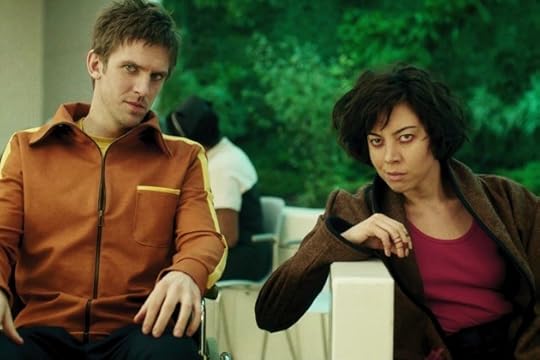
FX
Wednesday on FX
Premieres February 8
Viewers are getting another superhero spin-off show, but this one’s adjacent to the X-Men universe and based on the character Legion, a schizophrenic who realizes there may be more to his diagnosis. Legion is a tricky character to get right, but the show is from the talented Noah Hawley (Fargo) and has a terrific cast, including Dan Stevens (Downton Abbey), Aubrey Plaza (Parks and Recreation), and Fargo alumnus Jean Smart.

HBO
Sunday on HBO
Returns February 12
Much ink has been spilled about Girls since its debut in 2012, but this is everyone’s last shot to weigh in on Hannah Horvath (Lena Dunham) and company’s antics—season six will be the last. These final 10 episodes will surely air free of controversy and nary a hot take will be written about them, especially ones about what the show has meant for millennial culture.
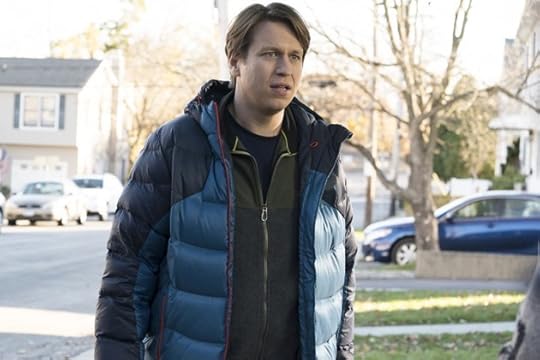
HBO
Sunday on HBO
Premieres February 19
One potential successor for Girls is another HBO quasi-sitcom shepherded to screen by comedy vet Judd Apatow. Pete Holmes, a brilliant stand-up who has long been in search of the right TV project (his TBS late-night talk show was canceled too soon), created Crashing and based it on his own life in the stand-up world. It follows Pete (Holmes, playing himself), who’s trying to cobble together a living as a comedian while dealing with the collapse of his marriage.

CBS
Sunday on CBS All Access
Premieres February 19
A spinoff of long-running legal drama The Good Wife, this show is being used to launch CBS’s new streaming service CBS All Access, premiering on the TV network before bouncing over to the online subscriber-only network. Set a year after The Good Wife’s finale, The Good Fight follows Diane Lockhart (Christine Baranski) as she moves to a new Chicago law firm with her former colleague Lucca Quinn (Cush Jumbo) and her goddaughter Maia (Rose Leslie of Game of Thrones). Delroy Lindo co-stars as a rival attorney.
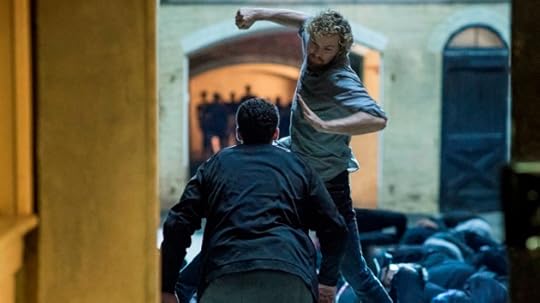
Netflix
Friday on Netflix
Premieres March 17
The Netflix Marvel universe continues to build out with its most problematic superhero—Danny Rand (played by Finn Jones of Game of Thrones), a billionaire industrialist who has been missing for 15 years and returns to New York proficient in kung fu. Though Rand (created in the ’70s during the first pop-culture boom for martial-arts movies in the U.S.) has always been written as white, he may be an uncomfortable sight for Marvel in 2017, especially after the whitewashing controversy over its film Doctor Strange.
The Handmaid’s Tale

Hulu
Wednesday on Hulu
Premieres April 26
Margaret Atwood’s 1985 masterpiece of speculative fiction, set in a totalitarian theocracy where women’s rights have been erased by a religious movement that seized power in the United States, seems quite relevant to the contemporary political mood, and has never gotten a proper adaptation. Hulu is positioning this 10-episode series as its prestige drama of the spring, with Elisabeth Moss starring as Offred; Joseph Fiennes, Samira Wiley, and Yvonne Strahovski co-star.

AP
Fargo
Returns this spring on FX
No official premiere date has been set for the third season of Fargo, but the cast is as stacked as ever, with Ewan McGregor playing dual lead roles, and Carrie Coon (The Leftovers), David Thewlis, Michael Stuhlbarg, and Mary Elizabeth Winstead all involved. Unlike the last season, the show will be set in the near-present day (2010, according to reports), opening up the possibility that characters from its first season could return (though the creator Noah Hawley is keeping quiet about any plot details).
The Leftovers
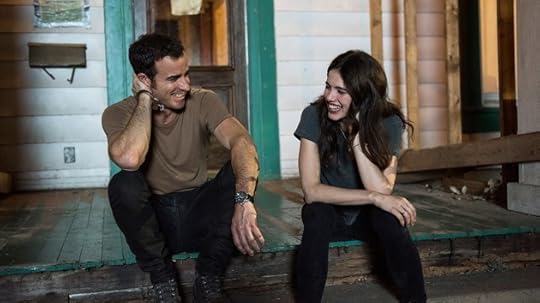
HBO
Returns this April on HBO
In its second season, this TV adaptation of Tom Perrotta’s novel The Leftovers built on its promise to become one of the best, most fascinating, confounding shows on television. Perhaps cognizant that his last great show (Lost) lasted a little too long, co-creator Damon Lindelof is ending the show this year, shifting the action to Australia but keeping the entire main cast (minus Ann Dowd’s dearly departed Patti Levin). The show will struggle to top season 2’s episode “International Assassin,” but whatever Lindelof and Perrotta do come up with is sure to be fascinating.
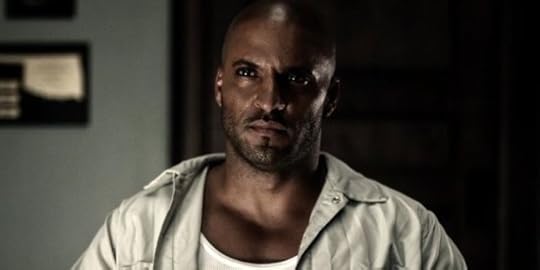
Starz
Premieres this April on Starz
A much-hyped adaptation of Neil Gaiman’s 2001 novel, focusing on Shadow Moon (Ricky Whittle), an ex-con recruited by the mysterious Mr. Wednesday (Ian McShane), who is recruiting the world’s forgotten gods (to say more would be spoiling). Adapted by Bryan Fuller (Hannibal) and Michael Green (Kings), the series, which was initially in production at HBO, promises to be a suitably epic take on Gaiman’s writing. (The first season will cover only the first third of his novel).
Star Trek: Discovery

CBS
Premieres this May on CBS All Access
The first Star Trek show since Enterprise concluded in 2005, Discovery has a heavy fan burden to shoulder, but an exciting cast and crew aboard. Set 10 years before the original Star Trek series, Discovery will not take place in the world of the recent rebooted film series, instead charting the journey of the USS Discovery after weathering a much discussed but secret “incident” in Trek lore. Sonequa Martin-Green (The Walking Dead) stars as Rainsford, the ship’s second officer (the first non-commanding officer to headline a Trek series). Like The Good Fight, this show will premiere on CBS then move to its All Access streaming network.
Game of Thrones

HBO
Returns this summer on HBO
Knocked from its usual April perch by a filming schedule that demanded more time in snowier climes (winter has, after all, come to Westeros), the seventh and penultimate season of Game of Thrones will arrive at some point this summer on HBO for an abridged seven episodes. Will George R. R. Martin finish his next book before then? Will Jon Snow and Daenerys Targaryen become the best of friends? Will Cersei Lannister’s quest for power finally end in glory? All that, and much more, as HBO tries to squeeze as much life out of its big ticket as possible before the whole shebang wraps in 2018.

January 3, 2017
When America Last Had Two Presidents at One Time

Over the holiday weekend, the Nixon biographer John Aloysius Farrell (who has sometimes written about the 37th president in this space) delivered what might be called a historical bombshell. Using notes from H.R. Haldeman, Nixon’s chief of staff, he reported that despite years of insistence it was not true, Nixon had in fact used back channels to kill peace negotiations to end the Vietnam War on the eve of the 1968 presidential election, in order to give himself a leg up in that race. Farrell writes:
But Nixon had a pipeline to Saigon, where the South Vietnamese president, Nguyen Van Thieu, feared that Johnson would sell him out. If Thieu would stall the talks, Nixon could portray Johnson’s actions as a cheap political trick. The conduit was Anna Chennault, a Republican doyenne and Nixon fund-raiser, and a member of the pro-nationalist China lobby, with connections across Asia….
Nixon told Haldeman to have Rose Mary Woods, the candidate’s personal secretary, contact another nationalist Chinese figure — the businessman Louis Kung — and have him press Thieu as well. “Tell him hold firm,” Nixon said.
The discovery is, despite coming four decades after the events it describes, and 23 years after Nixon’s passing, timely, because Nixon feels especially relevant these days—if not now, more than ever, certainly now, more than any time recently. As Farrell notes, Nixon’s moderation and effectiveness in enacting major reforms appeal to Democrats dismayed with the rightward drift of the Republican Party. There are also less flattering comparisons: Nixon’s legendary volatility has drawn parallels with Donald Trump’s spur-of-the-moment decision-making style, and suggestions that generals might refuse to follow illegal or dangerous orders harken back to the days when Nixon’s defense secretary, James Schlesinger, effectively placed himself between the president and any order to use nuclear weapons. And then of course there’s a break-in at the Democratic National Committee during the heat of a close presidential campaign—it could be Watergate, or it could be last summer’s hacking attacks.
Related Story

Richard Nixon: We Shall Not See His Like Again
But the dynamic of late 1968, with one president on his way out the door but trying to accomplish what he could, and another, aspiring president attempting to undermine those policies, also speaks directly to the present moment in American politics.
In fall 1968, Johnson was attempting to find a way to end the war, which he had inherited from President John F. Kennedy and expanded, and which had already destroyed his political fortunes, leading him not to run for reelection. A successful negotiated end to the war would not have saved his presidency, but it might have helped redeem his legacy.
But Nixon worried that would help elect his rival, Democrat Hubert Humphrey. As Farrell explains, Nixon—a former vice president, senator, and U.S. representative—had a large network of contacts he could draw on to help torpedo the peace talks. Anna Chennault, a Republican fundraiser, had close ties across Asia through her lobbying on behalf of nationalist China. Through her, and with the help of Chiang Kai-Shek, they pressured South Vietnamese President Nguyen Van Thieu to stall talks. Rose Mary Woods, Nixon’s secretary who would later become famous for erasing tapes from the Oval Office, worked another connection. Other elements of the effort were far simpler: Nixon threatened CIA Director Richard Helms with firing if he didn’t cooperate.
In the end, Nixon’s meddling worked, scuttling any peace deal. Perhaps it helped contribute to his victory in the presidential race, too, which he won by less than a percentage point in the popular vote. Whatever the benefit to Nixon, the costs of not ending the war are clear: More than 21,000 Americans were killed in Vietnam between the end of 1968 and the American withdrawal.
The effect of this strange maneuvering was that for a time, foreign leaders were negotiating with two different American heads of state, one elected and one not yet in office, a situation that is now being repeated with Barack Obama and Donald Trump. Nixon’s extensive government experience allowed him to intervene even before he was elected president, while Trump had to wait until after his upset win.
Since November 8, however, Trump has not been shy about jumping in. Lame-duck presidents are not a new phenomenon, and countries have long known that they can slow-walk through the last days of one administration to get to the next. What sticks out about Trump’s pre-presidency is his willingness to break traditions by using the bully pulpit even before he possesses it. He has openly disputed the overwhelmingly assessment of the U.S. intelligence community on whether Russia is responsible for the hacks. When the U.S. government lowered sanctions on the Kremlin over those attacks, Trump all but promised to reverse course once inaugurated. When the UN Security Council considered a resolution condemning Israeli settlements in the occupied territories, Trump first lobbied the U.S. to veto it and then promised things would be different when he came to power.
There’s plenty of space for Trump to continue bedeviling Obama in the remaining few days of his term. The president is seeking to move as many prisoners as possible out of the facility at Guantanamo Bay before he leaves office. Taking prisoners has been a good way to curry favor with Washington for the last eight years, but with Trump noisily backing the facility, would a foreign leader want to take the risk of annoying the incoming president, a man who does not carry a grudge lightly?
Nixon’s meddling in the Vietnamese negotiations is reminiscent of Trump’s interactions with Obama in another way, related to the alleged Russian hacks. The White House became convinced during the presidential race that Russia was behind the attacks on the DNC and others, and some analysts concluded they were intended to hurt Hillary Clinton’s campaign and help Trump’s. But Obama, expecting a Clinton victory and wary of being seen as meddling in the race, was hesitant to go full-bore. Finally, in early October, the White House formally accused the Putin regime of involvement, though it still tempered its language, only offering a full-bore condemnation after Trump’s victory.
Johnson, too, learned of Nixon’s moves before the votes were cast—he had the FBI track Chennault, Nixon’s Chinese national fixer. He was furious. But Johnson, like Obama, held most of his fire, never going public with the accusation because he did not feel he could prove it. Still, he seethed in a conversation with Senate Minority Leader Everett Dirksen, an Illinois Republican. “I’m reading their hand, Everett. This is treason,” he said, according to Farrell. “I know,” Dirksen replied.
Publicly, Obama has not used any language nearly this strong, though he was unsparing in his assessment of Trump’s qualifications during the campaign. But some liberal writers have been happy to haphazardly label Trump’s reaction to the hacking scandal as treasonous. Does Obama privately feel that strongly about Trump’s conduct? Some day, when he’s been ex-president for many years, perhaps his presidential papers will offer a hint. For now, though, he’s just one of two presidents—and perhaps the weaker of the two.

The Bachelor Gives Nick the Redemption Edit
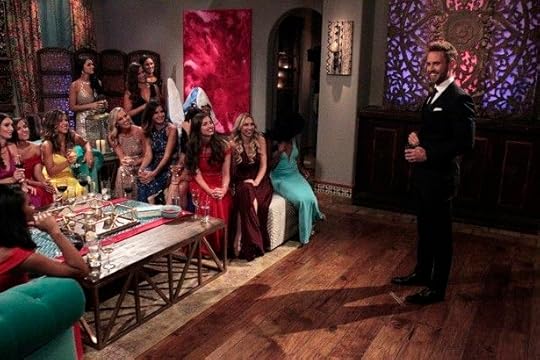
There are many ways to be a villain on The Bachelor. You can be overly aggressive in pursuit of the Bachelor or Bachelorette whose heart—and, in the meantime, whose rose—you are seeking. You can be disrespectful of your fellow contestants. You can be overly emotional. You can be not emotional enough. Or you can be, if you are Nick Viall, all of those things at once: a multi-dimensional villain—someone who is not villainous in one particular way, but whose villainy instead accretes, episode by episode, by way of bad behavior and good editing.
In his two seasons as a contestant on The Bachelorette, Nick, a 30-something software salesman from Wisconsin, annoyed the other guys by bragging about his connection with the Bachelorettes in question, and also by writing fawning poems, and also by singing weird songs with sexually explicit lyrics. During the live After the Final Rose special that concluded Andi’s season, Nick violated one of the cardinal, if unspoken, rules of Bacheloretteism: He discussed what happened between the two in the Fantasy Suite—the one place where a couple can interact away from the show’s otherwise omniscient cameras. And he revealed that he and his almost-fiancée had indeed had sex during their stay in the Suite. Cue, for Andi, the slut-shaming.
So it was a matter of thinkpiece-friendly controversy, then, when, in August, The Bachelor announced that Nick, for all this aggregated awfulness, would get rewarded with a prize that is even more valuable than a telegenically red rose: He would be the next Bachelor. Come January, Nick would have 30 women—not just beautiful women, but also “accomplished” ones, the show goes out of its way to insist—vying for his heart. It was a casting decision that presented a challenge for a show that, for all its glitter and fluff, revolves around its own implied moralities: about marriage and the path that should lead to it, about sex, about the things that make one, in one of the show’s recurring phrases, “deserving of love.” With Nick, who snagged the bachelorship over the expected candidate, the sensitive cowboy Luke, The Bachelor’s producers needed to find a way to have it both ways: to benefit from the ratings-grabbing drama of a controversial Bachelor while also maintaining the moralism of a televised mating routine that demands that its participants, all of them, be “there for the right reasons.”
The Bachelor has always revolved around fairy tales; now, it’s Nick—Snow White clad in a skinny-cut suit—who may be saved by his lover’s kiss.
Their solution, it seems: The Bachelor is insisting that its star, while still “controversial,” has changed. Nick is a villain no longer, it claims, but a man whose prior mistakes have now made him more intent than ever to Find Love. “This is the season of redemption,” Kathy Griffin—yep, that Kathy Griffin—announced in a special leading up to Monday’s season 21 premiere. And during the premiere itself, The Bachelor’s host, Chris Harrison, laid things out yet again: “From bad boy to Bachelor,” Harrison said, with ceremonial solemnity, “we’ve all seen Nick grow.” With Nick’s season, the show that perfected the villain edit, and more recently the crazy edit, is giving its viewers a new one: the redemption edit.
The groundwork for Nick’s comeback story was established this summer, when he made his third appearance on the franchise’s shows as a contestant on Bachelor in Paradise. That season’s villain spots being already occupied by Chad and Lace and Ashley, the show found another role for Nick: as a straight-talking adviser to Ashley, as a good boyfriend to Jen, as an affable friend to all. Nick’s willingness to participate in three rounds of Bachelor-hood established him as the best thing the show can imagine a person to be: as someone who believes in Love, and who is willing to undertake whatever ritual humiliations Journey might be necessary to find it.
Related Story

The Crazy Edit: The Colorful Cruelties of Bachelor in Paradise
That narrative spilled over into the new season of the show. Nick, The Bachelor’s Season 21 made clear on Monday, would redeem himself from his previous villainy not just by abandoning the antics of the past, but also by searching, with earnestness of heart and purity of purpose, for “a woman to spend his life with.” Monday’s premiere began with Nick receiving adorable dating advice (be open-minded, be honest, “don’t mumble”) from his young sister. It continued with the typical stuff of Bachelor scene-setting: with shots of Nick joking with his large family (he’s one of 11 kids) and running, pensive and shirtless, and looking, longingly, into the middle distance.
But the episode also added, for good measure, a heavy dose of payback. Many of the show’s new contestants, as they introduced themselves to their suitor on the water-washed driveway of the Bachelor Mansion, made a point of bringing up Nick’s past to him. Taylor, a therapist from Seattle, announced at length that her friends had warned her about Nick and his villainous ways. Many of the other women ribbed him for being a three-time loser on the show. They all tempered the typical Bachelor-hagiography with acknowledgements that, this time around, the Bachelor isn’t perfect. Instead, he’s perfectly flawed. He is probably, dear viewer, a lot like you.
And so, with that, The Bachelor has found something that might well be as compelling, good-TV-wise, as villainy: forgiveness. The Bachelor has always relied on fairy tale frames for its narrative drama; now, it will be Nick—Snow White clad in a skinny-cut suit—who may or may not be saved by his lover’s kiss. Will he be able to redeem himself, in the eyes of the women competing for him and in the eyes of the members of Bachelor Nation? Will he be there, in the end, For the Right Reasons? Will he be, finally, Deserving of Love? If Nick “gets down on one knee” at the end of the series, Chris Harrison noted, soberly, during Monday’s premiere, “he’s also asking that person to forgive him for all the mistakes he’s made in his life.”
Or, as Nick put it to a fan, as he embarked on his pre-Bachelor-appearance tour of the nation: “If we hug, will you, like, forgive me?”

Mariah Carey Feeds the Schadenfreude Cycle
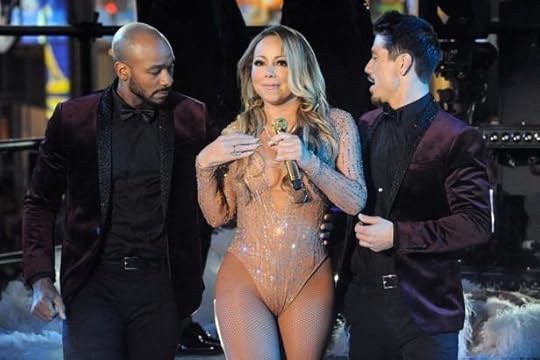
On New Year’s Eve, Mariah Carey gave 2017 an ominous curtain-raiser by grimacing and complaining, rather than singing or even correctly lip-syncing, through two songs, later saying that technical errors prevented her from hearing her backing tracks. It was the kind of moment a fiction writer wouldn’t put on page for fear of being too unsubtle. Without 29 years in the public spotlight, without her unbeaten slew of No. 1 hits as a solo artist, without the gymnastic comparisons her vocal range once inspired, without her zany “diva” persona—the all-salmon-and-capers diet, the only-photographed-from-one-side policy, the “I don’t know her” moment—and without her every recent singing error having gone viral, the internet might have served up some “welp, 2016” jokes and moved on.
Instead, there were cracks like this—
2016 was channeling The Little Mermaid and ended the year by stealing Mariah Carey’s voice.
— The Dark Lord (@Lord_Voldemort7) January 1, 2017
—and images like this—
A photo posted by vincenzo (@vincent_casimir_) on Jan 3, 2017 at 1:47am PST
—both of which, knowingly or not, flip an internet fandom trope in which Carey is shown as Ursula and her presumed rival Ariana Grande plays Ariel. It’s a perfect example of how Carey has become a catchall target of attitudes about aging, femininity, and talent; after all, the gender-studies read of The Little Mermaid is way too easy, with a girl made to trade her speech for love and an elder woman evilly coveting a younger woman’s abilities.
Carey has also long embodied America’s conflicting attitudes around celebrity, with the hunger to create idols matched by a hunger to tear them down. Her original success came from a physical gift—a vocal range—comparable to athletic ability, extraordinary but bound to diminish with time. Around that talent she built a persona, a business, a following, and an impressive recording catalogue, all of which remain intact even as her voice does what voices do: age. Her recent E! reality show, Las Vegas residency, and bookings like Times Square on New Year’s Eve demonstrate a demand for her to remain in the public eye. But the gleeful social media response to this latest bust of a performance also demonstrate how some element of tragedy is now part of her appeal.
Carey knows how much America likes to laugh at her.
Carey knows America likes to laugh at her; for evidence, see her tweet after the performance, or see the fact that she is blaming the New Year Eve debacle on sabotage. She wandered around without singing for two of the three songs she’d been set to perform, her camp says, because Dick Clark Productions repeatedly ignored Carey’s technical warnings—perhaps for cynical reasons. “We live in this viral world where anybody will do anything for a viral moment,” Carey’s manager Stella Bulochnikov told EW.
Dick Clark Productions has called such allegations “absurd,” but regardless of the truth of the matter, a viral moment happened, serving up something for everyone. The people who like to tell Carey to just quit got to sound off again. The folks morally opposed to lip-syncing and backing tracks—even in a loud, hyper-produced environment like Times Square on New Year’s Eve—got to preach their beliefs. Carey’s status as a semi-self-aware performance artist, commenting on fame and delusion simply by existing, was further cemented. The national pastime of resenting the rich while also paying them continued. And, more than anything, the Mariah Carey fan army got to do what it now exists to do: defend.
It’s all a reminder that schadenfreude is one of the most powerful forces in pop culture—a negative complement to the praise that makes any particular celebrity successful. Justin Bieber’s tabloid antics release pent-up adult disdain for a boy superstar; Kanye West’s mental health troubles gave some an opportunity to discredit his boasts to genius; Kim Kardashian’s robbery was a chance to condemn conspicuous consumption. And Mariah Carey may not have performed her hits on New Year’s Eve, but other people got the pleasure of singing their same old songs about her.

27 Movies to Look Forward to in 2017

Another year, another spell of films to anticipate, delight in, and dread. There will be sequels, superheroes, and Star Wars, of course, but there’s plenty else on offer from Hollywood this year—and smaller projects in the hopper that are sure to surprise in the coming months. Here’s a look at some of 2017’s most notable projects.
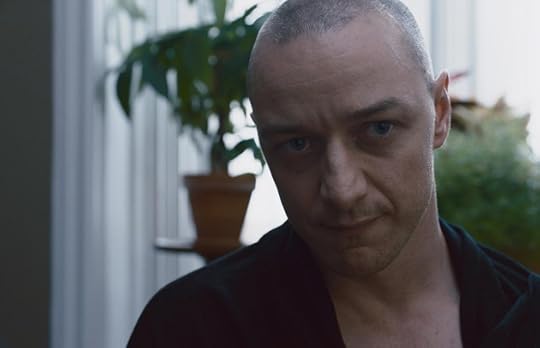
Universal
Split (January 20)
What It Is: M. Night Shyamalan (The Sixth Sense, Signs), having rediscovered his skill at making entertaining horror schlock with 2015’s The Visit, is back for more with a truly absurd high-wire act. James McAvoy plays Kevin, a menacing predator who kidnaps three teenage girls and locks them in his basement; they then realize that Kevin suffers from some (entirely fictional) form of multiple-personality disorder that manifests as 23 different characters in one body.
If You Need Convincing: After years in the Hollywood wilderness with flops like The Last Airbender and After Earth, Shyamalan has rediscovered his mojo by tapping back into the B-movie charm that made him a star director in the first place. Split looks like a ridiculous, but entirely self-aware thrill ride; early reviews from Austin’s Fantastic Fest were largely positive.
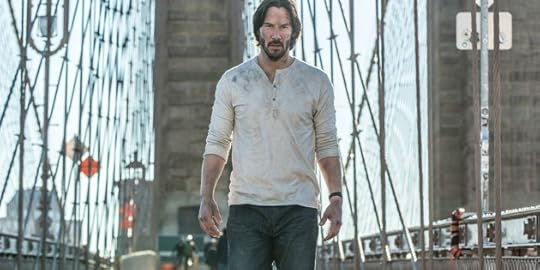
Summit Entertainment
John Wick: Chapter Two (February 10)
What It Is: A sequel to one of the biggest cult surprises of the decade, this Keanu Reeves action thriller promises more of the same from 2014’s word-of-mouth sensation John Wick. Reeves plays Wick, a terrifying former hitman for the mob; he’s lured out of retirement for some plot-perfunctory reason; ridiculous, balletic violence ensues. Joining the cast this time around are Common, Ruby Rose, and Reeves’s Matrix co-star Laurence Fishburne.
If You Need Convincing: John Wick was one of the most genuinely electrifying things Hollywood has produced in years. It was trash, but glorious trash, with a visual panache and penchant for world-building that kept it from feeling disposable. It also correctly deployed Reeves, one of Hollywood’s most fascinating stars when given the right vehicle. The John Wick director Chad Stahelski is at the helm for Chapter Two, though his partner David Leitch has moved on to other projects. Hopefully lightning can strike again.

Universal
The Great Wall (February 17)
What It Is: An epic fantasy drama from Zhang Yimou, one of the masters of contemporary Chinese cinema, about a gritty band of soldiers and bandits trying to protect the Great Wall of China from a monster invasion during the Song Dynasty. The most expensive Chinese film ever made, The Great Wall has already grossed a stupendous $150 million in its native country.
If You Need Convincing: You may, considering the controversy that broke out last year upon the release of the film’s trailer, which emphasized Matt Damon over the other actors and drew complaints of whitewashing. Zhang and Damon have pushed back against the notion, saying the film is a historical fantasy and that Damon’s character was always written as white and is one of five heroes in the film (the other four are Chinese). Whatever the case, the film may herald the dawn of a more international era in big-budget filmmaking, since worldwide audiences are more and more crucial to Hollywood profitability.

Universal
Get Out (February 24)
What It Is: A satirical horror film from the director Jordan Peele, one half of Key & Peele. When Chris (Daniel Kaluuya) visits his white girlfriend’s family estate for the first time, he realizes that something bizarre is afoot, and frantically tries to escape after another African American in town warns him to “get out.” Allison Williams, Catherine Keener, and Bradley Whitford co-star as the initially pleasant, but ultimately sinister, family.
If You Need Convincing: Peele is a comic genius and a die-hard horror fan. For his debut feature (he wrote and directed) he’s teamed with the veteran producer Jason Blum (Paranormal Activity, Insidious, and many more) to make something both genuinely scary and thought-provoking. Peele has described Get Out as a modern-day Stepford Wives.
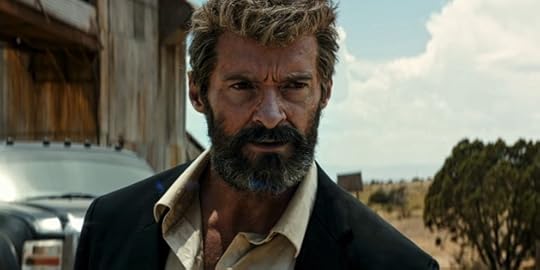
20th Century Fox
Logan (March 3)
What It Is: A swan-song to Hugh Jackman’s long-running performance as the mutant superhero (coming 17 years after his first appearance in X-Men), Logan takes place in a vaguely apocalyptic future, where the clawed menace embarks on one last effort to protect a young mutant girl.
If You Need Convincing: Superhero fatigue may well have set in a long time ago for some viewers, but Logan looks like a surprisingly small-scale, intense work, uninterested in tying into another other sequels or spinoffs. Its director James Mangold made the last, highly underrated Wolverine movie; this one is rated R and promises both an adult tone and an actual ending for the character.

Warner Bros.
Kong: Skull Island (March 10)
What It Is: The latest attempt to revive one of the most famous monsters in Hollywood history, this King Kong take veers away from the 1930s re-creation of the last remake (Peter Jackson’s 2005 film, which hewed closely to the 1933 original). Instead set in the ’70s, Skull Island follows a group of explorers and soldiers who stumble across the giant ape. Tom Hiddleston, Samuel L. Jackson, Brie Larson, and John Goodman star.
If You Need Convincing: Another King Kong film seems painfully unnecessary, and the film is being positioned as the start of a new franchise that will eventually cross over with Godzilla. But the trailer has a surprisingly peppy, free-wheeling quality to it, promising glorious fun from its monster rather than the usual grim tragedy.

Disney
Beauty and the Beast (March 17)
What It Is: An unnervingly faithful-looking remake of the 1991 Disney animated classic, starring Emma Watson as the free-spirited Belle, trapped in a castle with its monstrous lord (Dan Stevens), a prince transformed into a furry beast by a witch’s curse. Expect singing, dancing, and great heaps of CGI as these two crazy kids try to figure things out.
If You Need Convincing: Well, Disney certainly doesn’t think you will. Its live-action remakes of animated classics (Maleficent, Cinderella, and The Jungle Book) have all been colossal successes, a good way to simultaneously appeal to older generations and younger viewers craving spectacle. From the opening bars of its score, Beauty and the Beast will play on its audience’s every nostalgic desire, and it’ll capture hundreds of millions of dollars in the process.

Universal
The Fate of the Furious (April 14)
What It Is: The eighth (and certainly not final) entry in the sprawling cinematic franchise that has morphed from entertaining car-racing drama into an arcane, colorful, generation-defining series of high-wire spy capers. After bidding a sad goodbye to Brian (the late Paul Walker) in Furious 7, Fate is charting darker territory, with hero Dom Toretto (Vin Diesel) seemingly turning to evil thanks to a new character, Cipher (Charlize Theron). One imagines that all is not as it seems.
If You Need Convincing: Watch the previous seven Fast & Furious films. Their convoluted evolution from low-scale car hijinks into a world-traveling action soap opera is unlike anything in recent Hollywood history, and will bond you to the franchise. The franchise’s incredible run can’t last forever, but so far it’s shown no sign of slowing down.

Disney / Marvel
Guardians of the Galaxy Vol. 2 (May 5)
What It Is: The first of three (yes, three) Marvel movies in 2017 returns to the intergalactic fun of Peter Quill aka Star-Lord (Chris Pratt), Gamora (Zoe Saldana), Rocket Raccoon (Bradley Cooper), and all the rest. Kurt Russell is on board this time as Peter’s mysterious father; no doubt it will all have something to do with Infinity Stones again.
If You Need Convincing: Guardians of the Galaxy is, pound for pound, the most entertaining film Marvel has ever produced, and its writer-director James Gunn is back on board for the sequel. Also, Groot (Vin Diesel) is a little baby tree now, and if you aren’t sick of seeing him in advertising yet, you will be.

20th Century Fox
Alien: Covenant (May 19)
What It Is: After largely baffling audiences with Prometheus, his 2012 quasi-prequel to Alien, Ridley Scott seems to have returned to more conventional territory with Covenant, another adventure set before his 1979 sci-fi horror classic. It’s about a spaceship that stumbles on some weird eggs on a mysterious planet and then gets terrorized by an alien. Sound familiar?
If You Need Convincing: Scott seems aware that he alienated viewers by veering away from the Alien formula in some ways with Prometheus. Though he’s retained that film’s star Michael Fassbender (who plays dual roles here), he otherwise seems to be attempting a near-remake of Alien, down to the new hero Daniels’s (Katherine Waterston) Ripley-esque short hair.

Paramount
Baywatch (May 26)
What It Is: A shameless effort to revive another ultimate ’90s brand, Baywatch features plenty of chiseled stars (Dwayne Johnson, Zac Efron, and Alexandra Daddario among them) as a team of high-powered lifeguards. They’ll fight crime, run around on the beach, and wink to the camera as much as possible. David Hasselhoff and Pamela Anderson will contribute their expected cameos.
If You Need Convincing: Then you’re not the ’90s-obsessed demographic that studios are banking on these days. At best, Baywatch might have the knowing comic touch of Zac Efron’s Neighbors films; more likely, it’ll resemble the director Seth Gordon’s other perfunctory action-comedy efforts, like Horrible Bosses and Identity Thief.

Warner Bros.
Wonder Woman (June 2)
What It Is: She fought alongside Batman and Superman last year, and now she gets a starring role. After decades of attempts, the famed Amazon warrior, certainly the most iconic female comic-book superhero, is finally getting her own movie, directed by Patty Jenkins (Monster) and starring Gal Gadot. A period piece, the film will explain how Wonder Woman ended up in the modern world, departing her home island to fight in World War I alongside her love interest Steve Trevor (Chris Pine).
If You Need Convincing: The DC Comics film universe has been deathly grim so far, with neither Batman v. Superman nor Suicide Squad winning over critics. Wonder Woman looks far brighter and more colorful in contrast. Marvel is still yet to produce a film starring a female superhero, so look for Warner Bros. to draw as much attention as possible to Gadot’s starring role.

Dennis Van Tine / STAR MAX / IPx
The Beguiled (June 23)
What It Is: Sofia Coppola’s first film since The Bling Ring (2013) is a remake of the 1971 Civil War drama, itself based on the Southern Gothic novel A Painted Devil. Colin Farrell will take Clint Eastwood’s original role as a Union soldier nursed back to health at an all-girl Mississippi boarding school. Elle Fanning, Nicole Kidman, and Kirsten Dunst co-star.
If You Need Convincing: Coppola’s last period film, Marie-Antoinette (2006), was a visually lush work that subverted many of the norms of the female-focused costume drama. The 1971 version of The Beguiled is a fascinating, strange work that defies easy categorization; Coppola has assembled a terrific cast to try and do the same in 2017.

Sony / Marvel
Spider-Man: Homecoming (July 7)
What It Is: A new dawn in synergistic franchise programming, as Marvel Studios takes the reins of a character owned by Sony thanks to complicated, decades-long bits of corporate machination. This iteration of Spider-Man (played by Tom Holland) made his debut in Captain America: Civil War last year. In Homecoming, he’ll fight the Vulture (Michael Keaton) in his own movie, though Tony Stark (Robert Downey Jr.) will guest-star.
If You Need Convincing: Captain America: Civil War was a strange mash-up of a film, but Holland’s upbeat portrayal of a teenaged Peter Parker was its most winning element. We may not need a sixth Spider-Man film in 15 years, but we’re getting one, so it’s nice that the casting is on point.
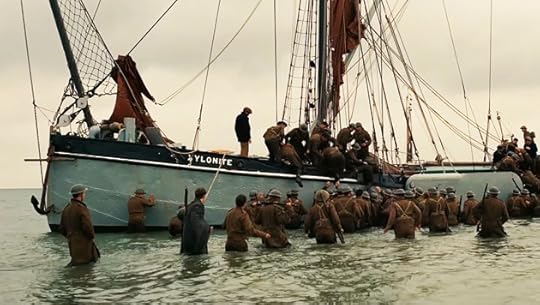
Warner Bros.
Dunkirk (July 21)
What It Is: An epic recreation of the 1940 evacuation of Dunkirk, a miraculous rescue mission that saved hundreds of thousands of Allied soldiers in the beginnings of World War II. The director Christopher Nolan has assembled a huge ensemble for the film, ranging from frequent collaborators Tom Hardy and Cillian Murphy, to legendary thespians Mark Rylance and Kenneth Branagh, and One Direction’s Harry Styles.
If You Need Convincing: Nolan is, for his flaws, one of the finest large-scale filmmakers of the moment. Films like Inception, Interstellar, and his Batman trilogy work their hardest to deliver widescreen set-pieces without being overloaded with CGI. Dunkirk, shot entirely on large-scale IMAX film stock, looks breathtaking, if nothing else.

Columbia Pictures
The Dark Tower (July 28)
What It Is: A long-gestating adaptation of Stephen King’s famed Dark Tower series, set in the mythical Mid-World, a magical spin on the Old West. Idris Elba stars at Roland Deschain, a frontier knight who wields a pair of revolvers, while Matthew McConaughey plays the film’s villain, Walter Padick.
If You Need Convincing: King describes the eight-book saga as his magnum opus, and many directors have taken cracks at adapting it, including J.J. Abrams (who eventually decided he was too fond of the work to take the necessary plot liberties to translate it to screen) and Ron Howard. Howard eventually passed it along to Nikolaj Arcel, a Danish filmmaker who made the Oscar-nominated A Royal Affair. Whether Arcel and the books can survive the move to big-budget Hollywood remains to be seen, but it’s an exciting question.

Working Title Films
Baby Driver (August 11)
What It Is: A high-octane thriller about a young, talented getaway driver (Ansel Elgort) who works for different bank robbers and gets ensnared in trouble when a heist goes wrong. Jamie Foxx, Jon Hamm, Kevin Spacey, and Lily James make up the rest of the cast.
If You Need Convincing: Baby Driver marks the return of the writer-director Edgar Wright (Shaun of the Dead, Scott Pilgrim vs. the World) to the big screen. After his last acclaimed project, sci-fi comedy The World’s End, he was sucked into and spat out of the Marvel engine, resigning from Ant-Man during pre-production over creative differences with the studio. Wright is one of the most exciting action directors alive, so Baby Driver should be a great engine for a comeback.

Universal Pictures
American Made (September 29)
What It Is: Based on a true story, American Made depicts the life of Barry Seal, a TWA pilot who became a drugs and weapons smuggler for the Medellin cartel, while also working for the DEA, eventually getting mixed up in the Iran-Contra scandal. Tom Cruise plays Seal, with Sarah Wright, Domhnall Gleeson, and Jesse Plemons co-starring.
If You Need Convincing: Cruise’s last project with American Made director Doug Liman was the fantastic sci-fi thriller Edge of Tomorrow. The role of Seal, who seems anti-heroic at best, could be a fun departure for the star, who has largely stuck to genre films in recent years (he’ll also star in The Mummy this summer).
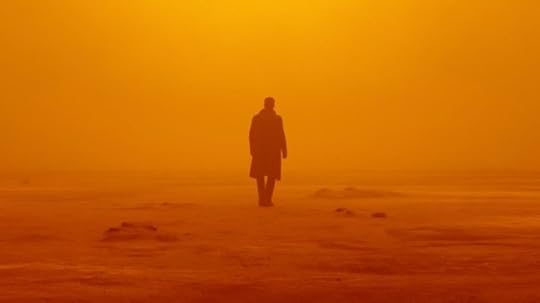
Warner Bros.
Blade Runner 2049 (October 6)
What It Is: Exactly what it sounds like—a sequel to Ridley Scott’s 1982 masterpiece Blade Runner, set in the year 2049 (30 after the events of the first film). The plot that we know is pretty simple: LAPD Officer K (Ryan Gosling), a “blade runner” tasked with retiring android “replicants,” goes on a quest to find Rick Deckard (Harrison Ford), who’s been missing since the events of the first film.
If You Need Convincing: The plot might seem like a carbon copy of another long-delayed sequel, Star Wars: The Force Awakens. But the look of the film as seen in its announcement trailer is pretty on-point, and director Denis Villeneuve made Arrival, one of the best films of 2016. Among the supporting cast are Mackenzie Davis, Jared Leto, and Robin Wright.

AP / Jordan Strauss
Logan Lucky (October 13)
What It Is: A comedy starring Channing Tatum and Adam Driver as brothers who plan a heist during a NASCAR race. Daniel Craig, Hilary Swank, Katherine Heigl, Katherine Waterston, Riley Keough, Seth MacFarlane, Katie Holmes, and Sebastian Stan make up the star-loaded cast.
If You Need Convincing: The cast is that loaded because Logan Lucky is directed by the great Steven Soderbergh, who has ended his self-imposed retirement from filmmaking to make it. His retirement was short-lived (only four years), but any Soderbergh project, no matter how thin the plot, is worth getting excited for.

AP / Joel Ryan
The Snowman (October 13)
What It Is: An adaptation of Jo Nesbø’s bestselling detective novel, The Snowman follows Harry Hole (Michael Fassbender) as he investigates the disappearance of a woman whose scarf is found wrapped around a snowman. Rebecca Ferguson, J.K. Simmons, Val Kilmer, and Chloe Sevigny co-star.
If You Need Convincing: This project was initially attached to Martin Scorsese, but it ended up in the hands of the Swedish director Tomas Alfredson, who made the delightfully moody Let the Right One In and Tinker Tailor Soldier Spy. Nordic mysteries have been tough for Hollywood to translate, but Alfredson might have the right touch for it.

Disney / Marvel
Thor: Ragnarok (November 3)
What It Is: The third entry in Marvel’s Thor series sees the Norse god of thunder (Chris Hemsworth) embark on some sort of intergalactic journey. His mischievous brother Loki (Tom Hiddleston) will surely be involved, as will the Hulk (Mark Ruffalo) and Doctor Strange (Benedict Cumberbatch); Cate Blanchett plays the film’s villain Hela, while Tessa Thompson is the new love interest Valkyrie (Thor’s old beau, Natalie Portman, has decided she doesn’t want to make any more Marvel movies).
If You Need Convincing: The Thor movies are almost criminally underrated, much happier to indulge in fun mystical antics without too much needless exposition, and anchored by Hemsworth and Hiddleston’s comedic chemistry. Ragnarok has a fantastic director: New Zealand’s Taika Waititi, whose What We Do in the Shadows (2014) and Hunt for the Wilderpeople (2016) were cult hits.

AP / Thibault Camus
Red Sparrow (November 10)
What It Is: A spy thriller starring Jennifer Lawrence, based on the 2013 novel by CIA veteran Jason Matthews that was acclaimed for its attention to detail. Lawrence plays Dominika Egorova, a Russian intelligence officer who matches wits with a hotheaded rookie CIA agent (played by Joel Edgerton).
If You Need Convincing: After delivering fairly sleepy performances in X-Men: Apocalypse and Passengers last year, Lawrence is in need of a home run. Perhaps the director Francis Lawrence (no relation), who worked with her on the Hunger Games sequels, can conjure one from her.
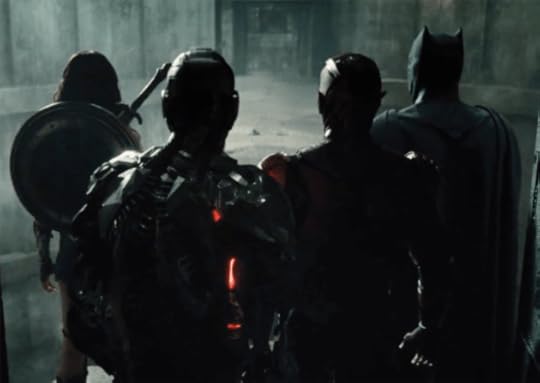
Warner Bros.
Justice League (November 17)
What It Is: Superman (Henry Cavill), Batman (Ben Affleck), Wonder Woman (Gal Gadot), Aquaman (Jason Momoa), The Flash (Ezra Miller), and the mysterious Cyborg (Ray Fisher) unite to battle evil as DC Comics’ famed super-team. Zack Snyder directs from a screenplay by Chris Terrio (Argo).
If You Need Convincing: Snyder’s run as a comic-book director is decidedly mixed (he made 300, Watchmen, Man of Steel, and Batman v. Superman), but he seems to have taken criticism on board. The Comic-Con trailer for Justice League displayed a much lighter tone than usual for him, perhaps an acknowledgement that people actually like to have fun when they see superhero movies.

Disney / Pixar
Coco (November 22)
What It Is: The second of two Pixar films this year (the first, Cars 3, comes out in June), Coco is an entirely original story inspired by the Mexican Day of the Dead. It’s the first Pixar feature to feature a non-white protagonist, but little is known about the plot other than that it follows 12-year-old Miguel as he finds himself in the realm of the dead.
If You Need Convincing: Pixar films have a storied track record, especially their original works (which are accompanied by a depressing number of sequels these days). Coco’s director Lee Unkrich last worked on the acclaimed Toy Story 3; his co-director, Adrian Molina, wrote the film’s script and is a veteran of the animated department.

Working Title Films
Darkest Hour (November 24)
What It Is: A historical drama focusing on British Prime Minister Winston Churchill (Gary Oldman) as he faces down Nazi Germany and “faces a crucial moment” at the beginning of World War II. Sure to be an Oscar player, given its heavily made-up protagonist and late-November release date.
If You Need Convincing: The director Joe Wright (Pride & Prejudice, Atonement) is in need of a rebound after Pan, his disappointing take on Peter Pan. Alongside Oldman, the film features Ben Mendelsohn as King George VI and John Hurt as Churchill’s predecessor Neville Chamberlain.

Disney / Lucasfilm
Star Wars Episode VIII (December 15)
What It Is: The eighth in a popular series of science-fiction films that have been kicking around Hollywood for the last few decades. Will likely make a few bucks at the box office.
If You Need Convincing: At this point, you probably don’t, but the still untitled Episode VIII is in the hands of Rian Johnson, a generally brilliant director behind smaller-scale works of genius like Brick and Looper. Also, maybe this time Luke Skywalker will get some lines!

How Trump Had It Both Ways on Congressional Ethics

This post was updated on January 3 at 12:24pm.
President-elect Donald Trump has shown a rare talent for leaving his own allies and friends in a difficult and awkward spot, and he demonstrated that talent again on Monday, weakly condemning a move by House Republicans to gut the Office of Congressional Ethics as a misplaced priority, while also calling the office “unfair”—a very public demonstration of why even the president-elect’s strongest allies sometimes find it difficult to follow his lead.
Within hours of his tweets, and amid broad public outcry, the House Republican caucus called an emergency meeting, and pulled the amendment—a black eye for the congressional GOP and its leadership, perhaps made even more humiliating by the public rebuke from their own president-elect.
Trump weighed in around 10 a.m. on Tuesday, about 14 hours into a hubbub over the House move.
With all that Congress has to work on, do they really have to make the weakening of the Independent Ethics Watchdog, as unfair as it
— Donald J. Trump (@realDonaldTrump) January 3, 2017
........may be, their number one act and priority. Focus on tax reform, healthcare and so many other things of far greater importance! #DTS
— Donald J. Trump (@realDonaldTrump) January 3, 2017
At first glance, it looked as if Trump was picking a fight with Congress, which to a certain extent he is. But that overstates what he actually said. Trump went out of his way to acknowledge the complaint, voiced by some members of Congress, that the ethics committee stepped on their due-process rights and was time-consuming. (Norm Ornstein makes the case for the committee here.) His only complaint was about the timing and priority of the move; needless to say, Trump would like the House to focus first on the things that he cares about most.
Trump’s tweets seem to demonstrate his keen ability to read an audience and react. They came after hours of pushback, but at a time when the fate of the amendment still seemed undecided—and leaning toward survival. By stepping into the debate when he did, he may have helped tip the balance against it, but he may also have jumped in just in time to claim credit for a shift that was already underway.
Put yourself in the shoes of Representative Bob Goodlatte, who on Monday put forward an amendment in the GOP Conference to gut the office. On the one hand, Trump spent the last month of the campaign claiming he would “drain the swamp” of corruption in Washington, while Speaker Paul Ryan and Majority Leader Kevin McCarthy, the House Republican leaders, both opposed Goodlatte’s amendment. On the other hand, Trump demonstrated no public interest in fighting corruption since he got elected, and has obstinately refused to acknowledge, much less mitigate, his own conflicts of interest. It must have seemed like a safe bet that the president-elect would look the other way.
Related Story

That’s presumably what Kellyanne Conway, a Trump adviser, was surmising when she went on MSNBC’s Morning Joe on Tuesday and faced a series of hostile questions about the House Republicans’ move Monday night. While Conway said she had not spoken with Trump about the vote, she offered a strong defense of gutting the office, saying that the GOP maintaining control of Congress meant “there’s a mandate there for them to make significant change.”
Ryan was left somewhere in the middle, too. He opposed the move within the conference, but he still allowed the rules package to proceed. Shortly after Trump’s tweets, he issued a long statement trying to have it several ways. The speaker acknowledged, “After eight years of operation, many members believe the Office of Congressional Ethics is in need of reform to protect due process and ensure it is operating according to its stated mission,” but he also insisted he had “made clear to the new Chair of the House Ethics Committee that it is not to interfere with the Office’s investigations or prevent it from doing its job,” a somewhat toothless demand.
Trump’s mild scolding does point to the tensions to come between the White House and the Republican Congress, which have made great efforts to project unity, despite Trump’s near-constant departures from—and sometimes flagrant disrespect for—the party line. One division is on Russia, where Trump has refused to even countenance the idea that the Kremlin was involved in malicious hacking in the presidential campaign, while many GOP members of Congress see it as dangerous intervention by a hostile regime. Gutting the OCE is another case where congressional Republicans have their own interests, and intend to pursue them. After all, the GOP caucus has undercut ethics rules before; the OCE was created after a series of scandals involving Republican members; and members have wanted to remove that threat for some time.
After calling an emergency meeting around noon, the House Republican caucus abruptly reversed course, removing the amendment to gut OCE from the rules package—a reversal as sudden as the introduction of the rule. That’s embarrassing for Goodlatte, perhaps the only member who is known to have supported the amendment, since the vote on it was private and anonymous. Ryan, whose Tuesday morning statement signaled acquiescence with his caucus, is also caught somewhat out in the open, showing that his control over members is weak. But Trump wins, as he always seems to do: He gets credit for helping sink the maneuver, imparting some “drain the swamp” glow without his actually taking steps to fight corruption, or even to condemn dismantling ethics watchdogs. And how could he have done otherwise? Picking a real fight with Congress on ethics would carry the risk that it might have a change of heart and actually start pushing Trump for accountability on his own ethical challenges.
Moving to pass the ethics rules now was a page torn right out of the Trump playbook: The theory is that you can get away with doing things that are egregious violations of norms, and even ones that might be politically toxic if handled through the typical political process, if they are instead dealt with brusquely, casually, and secretively. By the time the gutting of OCE was known, it was already passed and incorporated into the rules package, and the opponent best positioned to stop it, Paul Ryan, had already been steamrolled. But they play turned out not to work as well for the House as it has for the president-elect. It will be much harder to pass later, after having been pulled for public outcry. The abrupt demise of the amendment suggests two lessons for Republicans in Congress: Guessing Trump’s mind is impossible, and the tactics that work for him are liable to blow up in anyone else’s face.

January 2, 2017
And, Scene: American Honey

Over the last two weeks, The Atlantic delved into some of the most interesting films of the year by examining a single, noteworthy moment and unpacking what it says about 2016. Today: Andrea Arnold’s American Honey. This will be the final installment of the “And, Scene” series, which can be found in its entirety here.
If someone had told me a year ago that one of the most alluring cinema images of 2016 would be a ponytailed Shia LaBeouf dancing on a supermarket checkout counter, I might have scoffed. But Andrea Arnold’s American Honey is a film that exists to refocus its audience’s view of things, ripping us from the theater and jamming us into an environment, and a part of the country, that we might not fully understand. One of the most visually electrifying films of the year, American Honey was also my personal favorite. Nothing crystalized its unique and surprising appeal more than the idea that an exiled marquee idol could worm his way back into moviegoers’ hearts by behaving obnoxiously.
As Rihanna’s “We Found Love” blares on the K-Mart speaker system early in the film, the teenager Star (newcomer Sasha Lane) spots Jake (LaBeouf) from across the store and is immediately intrigued. Jake is clad in gray suit pants held up by suspenders and a short-sleeved button down, and his prominent, braided rat-tail is slung over one shoulder, but he radiates a strange sort of movie-star charisma all the same. The scene plays out like a childish flirtation—Star sticks out her tongue at him, he replies in kind, then starts dancing along to Rihanna, eventually jumping on top of a conveyer belt and leading those around him in dance.
Much like my last pick for this series, Hell or High Water, American Honey is not subtle about the message it’s trying to get across. “We found love in a hopeless place,” Rihanna croons as Star looks on at Jake; seduced, she follows him into the parking lot where he offers her an opportunity to escape her depressing life in Oklahoma. Star is gorgeous and charming, but also hostile and defensive. She’s seeking any kind of escape, but has no idea how to chart a path to the future she wants. Taking Jake up on his offer, she joins his “mag crew,” tearing around Middle America in a van with other misfits, selling magazine subscriptions door-to-door and crashing in motels along the way.
Arnold, a British director well-versed in her own country’s aimless youth (her 2009 film Fish Tank is a spiritual sibling to American Honey) spent years researching her script by traveling around the country with mag crews. Their rootlessness, and strange (if limited) sense of independence, speaks to something appealing about America—that you can pick up sticks and move on in search of something different—as well as to the inherent limitations of that way of life. Seeing Jake is love at first sight for Star: She’s drawn in by his swagger, his idiosyncratic style, his joyful willingness to flout the rules of society. Their relationship, as it plays out over the next two and a half hours, is fiery but doomed from the minute it begins.
American Honey has a garishness to it that some critics found reductive. Star’s mag-crew boss Krystal (Riley Keough) is an imperious, often cruel matriarch who spends one crucial scene wearing a Confederate-flag bikini. In her travels across the country, Star encounters families ripped apart by drug addiction, oil-field workers who have no idea how to interact with women outside of paying them for sex, and various other strangers who often straddle the line between helpful and predatory.
Still, every lurid detail feels part of a cohesive whole. Star is a window onto a world that won’t make all viewers feel comfortable, but that shouldn’t be ignored simply because of the unease it may inspire. In Jake’s initial dance and everything that follows, Arnold distills the twin prongs of his appeal: He represents the thrill of non-conformity and a chance to escape, both of them classic American dreams, in all their dishonesty.
Previously: Hell or High Water

Atlantic Monthly Contributors's Blog
- Atlantic Monthly Contributors's profile
- 1 follower



